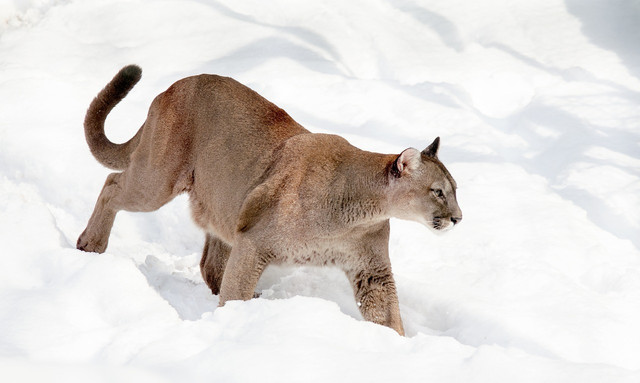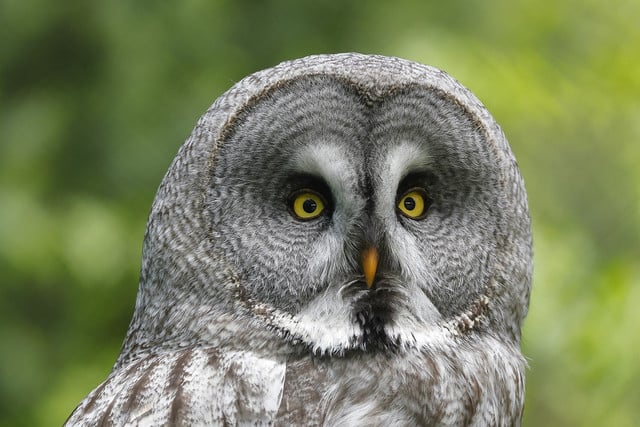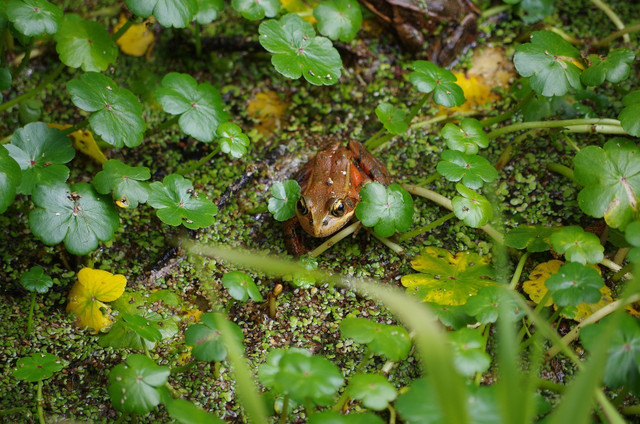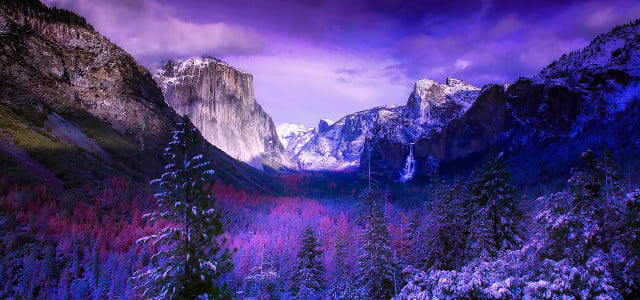Yosemite National Park is bursting with biodiversity across its wide range of habitats. Take a look at some of the surprising animals you can find there.
National parks serve as outdoor recreational and educational areas for the public while also focusing on wildlife conservation and cultural heritage. Established in 1872, Yellowstone National Park was the first National Park in the world, saving it from private development and opening it up for public enjoyment.
In 1916 the government created the National Park Service to conserve nature and culture and encourage outdoor recreation. Today there are over 400 national parks in the US and its territories, covering 84 million acres.
Originally established as federally preserved land in 1864, Yosemite National Park gained its national park status in 1890. It encompasses a vast wilderness area, covering 1,200 square miles and featuring waterfalls, meadows, valleys and ancient sequoia trees. Due to its immense size, Yosemite is brimming with biodiversity. It is home to over 400 different species of mammals, birds, amphibians, reptiles, fish and invertebrates.
Here’s the scoop on some surprising residents of Yosemite.
Large Animals in Yosemite National Park

(Foto: CC0 / Pixabay / strichpunkt)
- Sierra Nevada Bighorn Sheep. The only mammal in the park classified as endangered, these bighorn sheep inhabit the highest altitudes of the Sierra Nevada mountains. They live nowhere else in the world. If you go hiking at these great heights, you might be able to spot them with your binoculars.
- American Black Bear. Contrary to popular belief, black bears are brown, and there are actually less than 500 of them in Yosemite National Park. Many visitors come to the park to try to catch a glimpse — care must be taken as they can be aggressive around food or if they have cubs. The American black bear can also be found in the Pacific Northwest and the Rocky and Appalachian mountains.
- Sierra Nevada Red Fox. This fox is extremely rare and has not been officially recorded by scientists for over 100 years. Its color is red-brown or silvery black, and it lives at altitudes of 7,000 feet and above. It has adapted to survive freezing temperatures in winter and feeds on rodents. The Sierra Nevada red fox also inhabits the Oregon Cascades.
- Pacific Fisher. This at-risk species numbers fewer than 300 adults in the entire national park. Pacific Fishers, which look like otters or minks, eat birds and rodents. They are great climbers and usually live in trees in older forests.
- Mountain Lion. Yes, surprisingly, Yosemite has mountain lions. They live alone and feed on deer, raccoons and coyotes. They’re hard to find in the forests of the park; if you happen to come across one, don’t run away — try to be intimidating and scare it off.
Did you know that while wild cats are some of the cutest exotic animals in the world, you should keep them as pets? Learn more: Why You Shouldn’t Keep Exotic Pet Cats
Yosemite's Bird Inhabitants



(Foto: CC0 / Pixabay / sharkolot)
- Willow Flycatchers. A study carried out by the park’s staff showed that Willow Flycatchers don’t breed in the park anymore. This could be due to the changing wet meadows in the park, but further research must be done to assess the population size of this small brown bird.
- California Spotted Owl. Managed burning of some areas of the forest has helped maintain the numbers of this species of true owl, which inhabits holes in trees and rock crevices and feeds on small mammals like squirrels. It can also be found in other old-growth forests in the western states.
- Peregrine Falcons. Conservation efforts have increased the numbers of this large predatory bird. Peregrine falcons live on mountain cliffsides; they range from the Appalachian Mountains to the Mississippi River.
- Great Gray Owl. Interestingly, the great gray owls in Yosemite National Park are genetically different from those found in other states. Research indicates they are a unique species only found in the park, illustrating how important Yosemite National Park is to bird populations and how critical its habitats are to various species’ survival.
Amphibians in Yosemite National Park



(Foto: CC0 / Pixabay / marcellaphoto)
- Sierra Nevada Yellow-Legged Frog. Now classified as an endangered species, this frog used to be common around high-altitude streams and lakes. However, with its population declining by a drastic 95 percent due to invasive trout and a fungal disease, it looks set to go extinct. As its name suggests, it can also be found in Nevada.
- California Red-Legged Frog. This brown frog has small black dots on its back and can grow between two and five inches wide. Conservation efforts have increased the California red-legged frog population over the past decade after predation by non-native fish and disease kept it out of the park for 50 years.
- Yosemite Toad. Another species that used to be abundant but is now difficult to spot, the Yosemite toad is typically found in wet meadows. It has a unique call that assists in its identification and is endemic to the Sierra Nevada area from the Alpine Country to Fresco County.
Yosemite's Reptiles



(Foto: CC0 / Pixabay / AliceWonderMiscreations)
- Western Pond Turtle. This turtle is a species of special concern in California as its population is declining due to invasive predators and habitat destruction. It lives in a range of habitats like marshes, streams, ponds, rivers and lakes and a project is underway to increase its population in Yosemite Valley. It can also be found across the west coast of the United States, from Canada down to the north of Mexico.
- Coast Horned Lizard. This reptile is very difficult to spot and has only been officially recorded twice in Yosemite National Park. It has a flat, round body and horns — hence its name!
Read more:
- The 10 Best National Parks to Visit in Winter
- Returning National Parks to Native Tribes? An Overview
- 10 of The Best Hikes in Southern California
Do you like this post?








